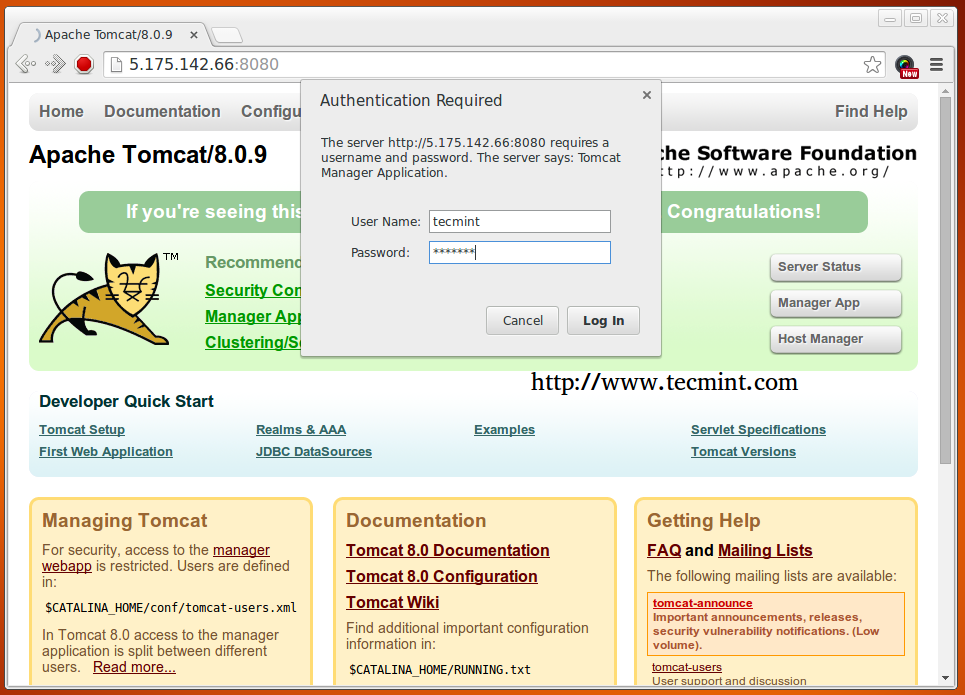
- #APACHE TOMCAT 8 SERVICE WINDOWS RESTART HOW TO#
- #APACHE TOMCAT 8 SERVICE WINDOWS RESTART INSTALL#
- #APACHE TOMCAT 8 SERVICE WINDOWS RESTART UPDATE#
- #APACHE TOMCAT 8 SERVICE WINDOWS RESTART ARCHIVE#
- #APACHE TOMCAT 8 SERVICE WINDOWS RESTART SOFTWARE#
Tomcat needs to know where Java is installed.

We want to be able to run Tomcat as a service, so we will set up systemd service file. Now that the proper permissions are set up, we can create a systemd service file to manage the Tomcat process. sudo chown -R tomcat webapps/ work/ temp/ logs/.Make the tomcat user the owner of the webapps, work, temp, and logs directories: Next, give the tomcat group read access to the conf directory and all of its contents, and execute access to the directory itself: Give the tomcat group ownership over the entire installation directory: We’ll set that up now.Ĭhange to the directory where we unpacked the Tomcat installation: The tomcat user that we set up needs to have access to the Tomcat installation. Next, we can set up the proper user permissions for our installation. sudo tar xzvf apache-tomcat-8*tar.gz -C /opt/tomcat -strip-components = 1.
#APACHE TOMCAT 8 SERVICE WINDOWS RESTART ARCHIVE#
Create the directory, then extract the archive to it with these commands:
#APACHE TOMCAT 8 SERVICE WINDOWS RESTART INSTALL#
We will install Tomcat to the /opt/tomcat directory. Use curl to download the link that you copied from the Tomcat website: This is a good directory to download ephemeral items, like the Tomcat tarball, which we won’t need after extracting the Tomcat contents: Next, change to the /tmp directory on your server. Under the Binary Distributions section, then under the Core list, copy the link to the “tar.gz”. At the time of writing, the latest version is 8.5.5, but you should use a later stable version if it is available. The best way to install Tomcat 8 is to download the latest binary release then configure it manually.įind the latest version of Tomcat 8 at the Tomcat 8 Downloads page. Now that our tomcat user is set up, let’s download and install Tomcat. sudo useradd -s /bin/false -g tomcat -d /opt/tomcat tomcat.We’ll make this user a member of the tomcat group, with a home directory of /opt/tomcat (where we will install Tomcat), and with a shell of /bin/false (so nobody can log into the account): We will create a new user and group that will run the Tomcat service. Step 2: Create Tomcat Userįor security purposes, Tomcat should be run as an unprivileged user (i.e. Now that Java is installed, we can create a tomcat user, which will be used to run the Tomcat service. Then install the Java Development Kit package with apt-get:
#APACHE TOMCAT 8 SERVICE WINDOWS RESTART UPDATE#
We can satisfy that requirement by installing OpenJDK with apt-get.įirst, update your apt-get package index: Tomcat requires Java to be installed on the server so that any Java web application code can be executed.
#APACHE TOMCAT 8 SERVICE WINDOWS RESTART HOW TO#
You can learn how to do this by completing our Ubuntu 16.04 initial server setup guide. Prerequisitesīefore you begin with this guide, you should have a non-root user with sudo privileges set up on your server. This tutorial covers the basic installation and some configuration of the latest release of Tomcat 8 on your Ubuntu 16.04 server.
#APACHE TOMCAT 8 SERVICE WINDOWS RESTART SOFTWARE#
Tomcat is an open source implementation of the Java Servlet and JavaServer Pages technologies, released by the Apache Software Foundation. The following settings allocate 2 GB memory to the start Java heap, 6 GB for the maximum heap size, 128 MB for the permgen space and 256 MB for the maximum permgen size.Apache Tomcat is a web server and servlet container that is used to serve Java applications. The following settings allocate 2 GB memory to the start Java heap, 6 GB for the maximum heap size, 128 MB for the permgen space and 256 MB for the maximum permgen size.




 0 kommentar(er)
0 kommentar(er)
